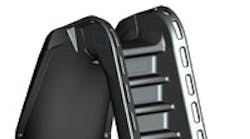Big needs and limited resources. Both descriptions frequently characterize the small to midsize manufacturer when it comes to product development efforts. However, while smaller enterprises face the same innovation and product development challenges as their larger brethren, the difference is they frequently lack the same breadth of internal resources to tackle the challenges. Luckily, a number of external resources exist to help fill the gap.
For example, such a situation faced manufacturer S.R. Smith in recent years as it sought to redesign and redevelop two rotational-molded pool slides for which it did not have the internal expertise, although it did maintain a small internal engineering team. The situation also faced entrepreneur Walter Berry, who not only had an idea for a toilet flapper replacement that would not leak, but who also had obtained new product development funding to pursue his idea. However, what he needed next was engineering expertise.
Both came to MAGNET The Manufacturing Advocacy & Growth Network. Among its functions, Cleveland-based MAGNET provides Manufacturing Extension Partnership (MEP) services to primarily small to midsized manufacturers in its Ohio service area. (For the unfamiliar, the Hollings MEP is a national network of specialists that aid U.S. manufacturers' competitiveness. A program of the National Institute of Standards and Technology, the partnership relies both on public and private funds.) In Berry's case, MAGNET also administers the Cuyahoga County New Product Development Loan Fund, from which he received funding.
The services provided by MAGNET's product design and development team run the gamut from ideation to industrial design to developing prototypes to launch strategy and everything in between. The small to midsize manufacturer makes up a large portion of its client base.
"We're a full-service innovation [firm]," explains Ed Nolan, vice president, MAGNET Product Design & Development. Such services can prove valuable to the smaller manufacturer who simply may not have the staff to fully support product development efforts. Or who may have engineers but not the correct discipline for a particular project. Or even the manufacturer who doesn't have the right software for a project and can't afford to invest the dollars to acquire it, Nolan says.
MAGNET The Manufacturing Advocacy & Growth Network provided manufacturer S.R. Smith with a range of product development services for the Typhoon slide.
According to MAGNET, its product development team worked with Berry for nine months, through hundreds of design iterations, before hitting on the right concept, called the Siphon Flush. Production of the product began earlier this year. Among the services provided to S.R. Smith were concept development, mechanical engineering and model build and testing phases.
Beyond the manufacturing services offered by the local MEPs (and those can vary greatly by location), the Hollings Manufacturing Extension Partnership also has developed the National Innovation Marketplace (NIM) in partnership with other organizations, including PlantEureka. Launched earlier this year, the goal of the online marketplace (www.usainnovation.org) is to connect small manufacturers and business opportunities using an open innovation strategy.
Once fully implemented, according to information on the MEP national Web site, "NIM combined with the NIST/MEP network of thousands of innovation experts will make it easy for suppliers to connect with opportunities and access a range of product development and commercialization assistance services to help rapidly move ideas from concept to investment, manufacturing, commercialization and distribution."
See Also





